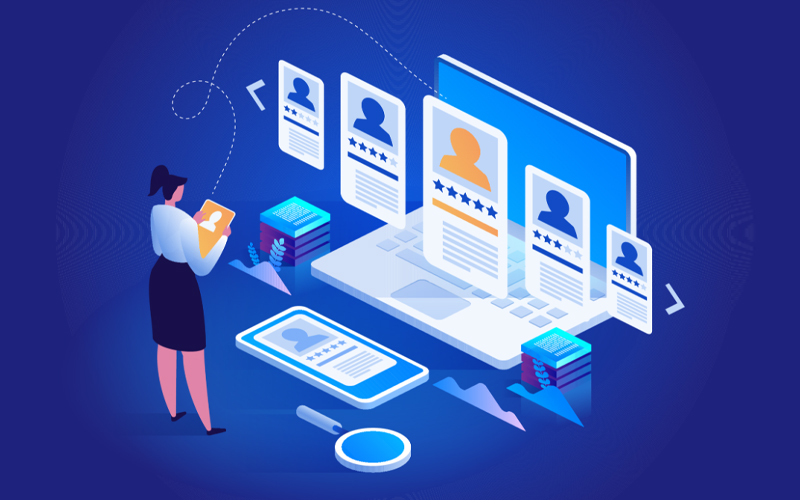Big data has transformed various industries, and the healthcare sector is no exception. One of the most promising applications of big data in healthcare is disease prevention. By harnessing the power of data analytics, healthcare professionals and researchers are gaining new insights and tools to detect, predict, and prevent diseases more effectively. The goal of healthcare analytics can be summarised as an effective technique to utilise data-driven insights to predict and resolve health problems on time, assess treatments, track inventory and increase the involvement of patients in their healthcare decisions. Treatment expenses can be reduced too while the overall quality of life can be enhanced.
Big data sources in healthcare include electronic health records (EHRs), medical images, genomic sequences, wearable devices, social media posts, and more. This data explosion has led to the accumulation of vast amounts of complex information that surpass the capabilities of traditional analytical methods, making it necessary to develop new techniques.
Here are a few facts and pointers about the role of big data in healthcare management.
- Monitoring and surveillance
When a natural disaster, an epidemic or any other emergency occurs, vast amounts of tracking data are generated. This data has so far been recognised as a potential treasure chest of information largely by software firms and start-ups, who realised that sifting through the heaps of health data would reveal trends and clues to many health issues. However, it is now essential for healthcare workers and researchers to encourage the tracking and mapping of outbreaks in real time so that they can deploy health resources to locations where the illnesses are most likely to spread next.
The emergence of infectious diseases or epidemics can also be detected by big data analytics as it sources data from public health records, social media reports or internet searches.
- Electronic Health Records (EHRs)
The use of EHRs has made it easier to register, store and analyse healthcare data. EHRs help create a unified system for electronic data, which in turn makes it easier for physicians, researchers and data analysts to access data from the same source. Analysis of this complex data requires sophisticated analytic tools, appropriate software and algorithms for data mining, integration and analysis. There are many business intelligence (BI) tools in the market today that can handle these tasks.
- Predictive analytics
Early detection and diagnosis is one of the key roles of big data in disease prevention. Predictive models are designed to analyse patient history and flag any anomalies that might indicate the early stages of a condition or disease. The anomalies could include changes in symptoms, vital signs or any critical test results. In such cases, early intervention and treatment could help prevent the onset of the disease or arrest its further development.
By analysing large datasets that include genetic information, environmental factors, lifestyle choices and health records, big data analytics can predict an individual’s risk of developing certain diseases too. Such a personalised approach allows healthcare professionals to develop necessary preventive measures.
X-rays, MRIs and CT scans are rich sources of visual data. Big data analytics can be programmed to detect even the subtlest abnormalities in these images and help radiologists accurately diagnose cardiovascular diseases, cancer and neurological disorders, among other conditions.
- Remote patient monitoring
By monitoring patients remotely, healthcare professionals can not only stay updated on patient health but also ensure that patients do not drop out of treatment programmes. The system also keeps medical staff informed about any side effects of medication or any other change such as blood pressure or blood sugar, to name just a few. Any corrective measures that are needed can be taken immediately. Additionally, patients feel safe when they can stay connected with their physician even when they are at home.
- Drug discovery and development
The process of drug discovery and development is both time-consuming and resource-intensive. Big data accelerates this process by analysing molecular data, genetic information, and clinical trial results to identify potential patients and therapeutic targets. Further, data-driven simulations reduce the need for extensive lab testing.
- Ethical and privacy considerations
While the potential of big data in disease prevention is undeniable, its use raises ethical and privacy concerns. Patient confidentiality and data security must be protected with the greatest care. Striking the right balance between data accessibility for research and protecting privacy is a critical challenge that must be addressed.
Big data is revolutionising disease prevention by providing healthcare professionals and researchers with invaluable insights and tools. From early detection and diagnosis to predictive analytics and drug development, the applications of big data in healthcare are far-reaching. By harnessing the power of these vast datasets, we are moving closer to a future where public health and quality of life can be enhanced. However, it is crucial to ensure that these advancements are harnessed responsibly for the benefit of all.
* For organizations on the digital transformation journey, agility is key in responding to a rapidly changing technology and business landscape. Now more than ever, it is crucial to deliver and exceed on organizational expectations with a robust digital mindset backed by innovation. Enabling businesses to sense, learn, respond, and evolve like a living organism, will be imperative for business excellence going forward. A comprehensive, yet modular suite of services is doing exactly that. Equipping organizations with intuitive decision-making automatically at scale, actionable insights based on real-time solutions, anytime/anywhere experience, and in-depth data visibility across functions leading to hyper-productivity, Live Enterprise is building connected organizations that are innovating collaboratively for the future.







